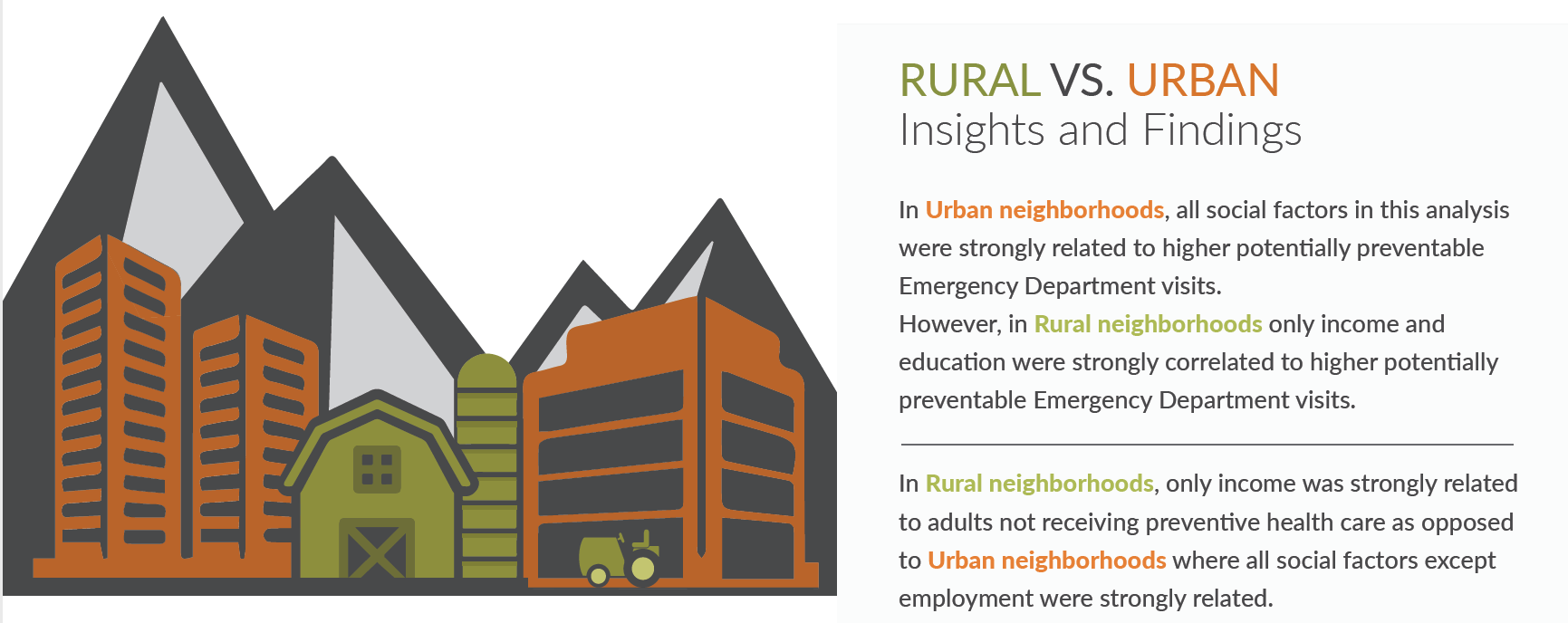Social factors such as race, education, income, housing, and transportation can have a major impact on a person’s ability to live a healthy life and play a powerful, fundamental role in health outcomes and health equity for individuals and entire communities. In fact, studies have found that up to 80% of a person’s health is related to social factors that are often out of their control.
The Health Equity Analysis shows the relationship between key social factors and access and use of health care services that can impact a person’s health. Communities can use this information to identify areas to focus health equity efforts.
Learn More
- Select a social factor (income, education, housing, race and language, etc.)
- Select a health care measure (access to care for kids, ED visits, etc.)
- Select a geography (statewide, or county)
- Each dot represents a community (or census tract) on the scatterplot graph results (top section).
- “Green” communities or dots in the bottom left are “better,” and “Orange” communities in the upper right are “worse” in terms of potentially impactful social factors and health care access or use.
- The line corresponds to the “R” value, or correlation coefficient, which identifies the strength of the relationship between the social factor and the health care measure.
- R values can be interpreted based on the number value:
- Weak or no relationship = 0 -.19
- Moderate relationship = .20 - .39
- Strong relationship = .40 - .69
- Very strong relationship = .70 – 1.0
For example, selecting the following choices in the report drop down menus, users get “R” of .56:
| Geographic Area | Social Factor | Health Care Measure |
| Denver County | % of People with Income Below Poverty Level | Potentially Avoidable ED visits |
An R of .56 indicates a strong relationship between the social factor and health outcome selections. This means that if the percent of people with low income go up, potentially avoidable ED visits will also likely to go up.
The map view offers users a different view of the same information which can be sorted at the individual county level to dig deeper into community variation.
- The health care measures in this analysis includes all public and private health insurance payers submitting data to the CO APCD, which represents the majority of covered lives (70% of medically insured) in the state. The CO APCD does not include roughly half of the self-insured employer covered lives and does not include federal programs such as Tricare, Indian Health Services and the VA.
- Maps displayed in the report use the 2019 Census tract definitions.
